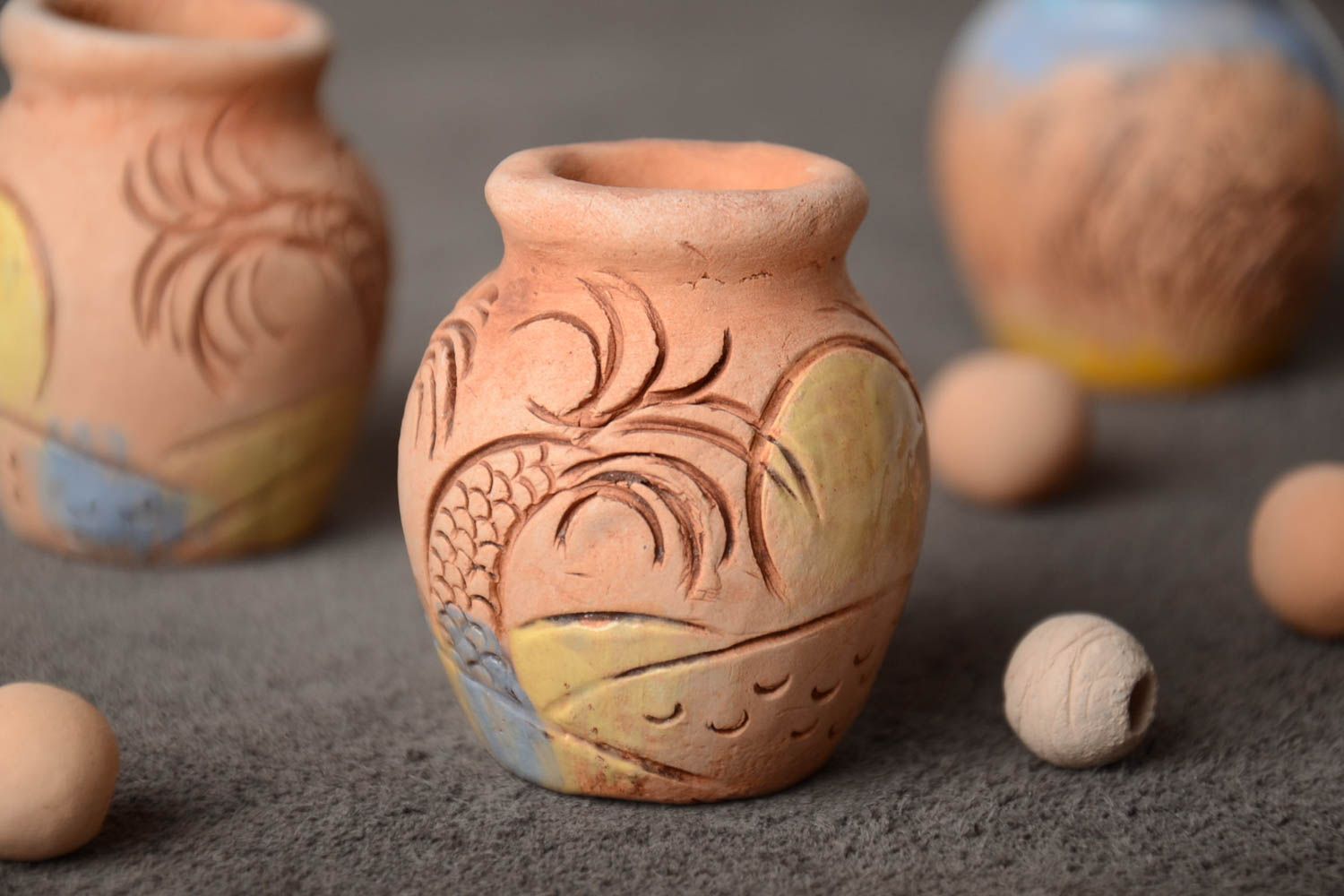
The venerable clay pot has its roots deep in ancient history. Our ancestors needed vessels to carry water and store food, and found the water-resistant naturally occurring clays in the soil were ideal. Even though today we can buy our vessels at the store and usually carry our water through pipes, clay pots remain beautiful, and are functional works of art and craft.
A vase (/ˈvɑːz/, /ˈveɪs/, or /ˈveɪz/) is an open container, today often used to hold cut flowers. It can be made from a number of materials, such as ceramics, glass, non-rusting metals, such as aluminum, brass, bronze or stainless steel. Even wood has been used to make vases, either by using tree species that naturally resist rot, such as teak, or by applying a protective coating to conventional wood. Vases are often decorated.
Vases generally have a similar shape. Lowest is the foot, a distinguishable base to the piece. The design of the base may be bulbous, flat, carinate, or another shape. Next, is the body, which forms the main portion of the piece. Resting atop the body is the shoulder, where the body curves inward. Then the neck, where the vase is given more height. Lastly, the lip, where the vase flares back out at the top. All these attributes can be seen in the picture at right. Some vases are also given handles.
In the pottery of ancient Greece "vase-painting" is the traditional term covering the famous fine painted pottery, often with many figures in scenes fromGreek mythology. Such pieces may be referred to as vases regardless of their shape; most were in fact used for holding or serving liquids, and many would more naturally be called cups, jugs and so on. Various styles developed around the world in different time periods, such as Chinese ceramics andNative American pottery. In 2003, Grayson Perry won the Turner Prize for his ceramics, typically in vase form.
No comments:
Post a Comment